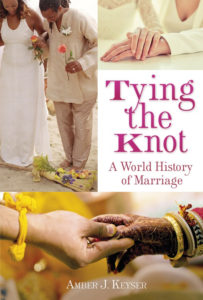 My next book is NO MORE EXCUSES: DISMANTLING RAPE CULTURE. It will be available early next year from Twenty-First Century Books. As many of you know, the writing of this book was devastatingly difficult. I spent months in dark places, wrestling with the reality of sexual assault in this country. I envisioned this book as a road map to a better place–a place where we can be safe in our own bodies, a place where mutual respect and enthusiastic consent are norms not exceptions.
My next book is NO MORE EXCUSES: DISMANTLING RAPE CULTURE. It will be available early next year from Twenty-First Century Books. As many of you know, the writing of this book was devastatingly difficult. I spent months in dark places, wrestling with the reality of sexual assault in this country. I envisioned this book as a road map to a better place–a place where we can be safe in our own bodies, a place where mutual respect and enthusiastic consent are norms not exceptions.
Kirkus calls this book “a laudably current guide to rape culture.” This is an important and timely book. It doesn’t shy away from the hard truths, but it’s not hopeless either. I wish I could put it in the hands of every single teen, especially now that Secretary of Education Betsy DeVos is rolling back hard-won protections for victims of sexual assault and harassment in schools.
California Representative Maxine Waters says the DeVos approach “will prioritize the interests of the institutions and the accused, while undermining protections for survivors.” The net result will be that fewer survivors will come forward and more perpetrators will be free to continue committing violence.
The best way to make sure this book finds its way to as many readers as possible is to get it into school libraries and public libraries. Join me in sticking it to Betsy DeVos. Submit a purchase request to your local public library. It’s easy. Usually all you have to do is search for “suggest a purchase” on the library website and fill in the critical information:
Title: NO MORE EXCUSES: DISMANTLING RAPE CULTURE
Author: Amber J. Keyser
Publisher: Twenty-First Century Books
Year: 2019
ISBN: 978-1-5415-4020-0
Audience: Teen
Genre: Nonfiction
Format: Book
Of course you are also welcome to preorder a copy for yourself from your local indie bookstore or direct from the publisher.
Purchase links: Lerner Publishing, Barnes and Noble, Amazon, and IndieBound.
*The book is published in a super strong binding designed for decades of use in libraries. That’s why it’s kind of expensive. Direct from Lerner is the best price.
Thanks, friends.
Let’s fix this rape-y culture we live in.
Our kids deserve better.
XO from me (as long as you consent).
 What’s love got to do with it? Not much, Keyser asserts in this examination of the history of marriage. Up until about 250 years ago, marriage was mainly a transaction or union of couples that entailed political, social, and economic factors. Her discussion of traditions and customs from different cultures and countries is a fascinating and insightful one. All types of unions are explored in this book, including levirate, same-sex, green card, and polyandry marriages. Keyser is straightforward and objective in her examination of different views on the institution. She highlights how changes in society (women’s rights, economic conditions, divorce rates, etc.) as well as a general shifting of attitudes has greatly affected marital unions. Keyser’s book is well researched and greatly illustrated with photographs. VERDICT This highly readable text would be a commendable addition to a social science collection for its pertinent information on cultural studies.
What’s love got to do with it? Not much, Keyser asserts in this examination of the history of marriage. Up until about 250 years ago, marriage was mainly a transaction or union of couples that entailed political, social, and economic factors. Her discussion of traditions and customs from different cultures and countries is a fascinating and insightful one. All types of unions are explored in this book, including levirate, same-sex, green card, and polyandry marriages. Keyser is straightforward and objective in her examination of different views on the institution. She highlights how changes in society (women’s rights, economic conditions, divorce rates, etc.) as well as a general shifting of attitudes has greatly affected marital unions. Keyser’s book is well researched and greatly illustrated with photographs. VERDICT This highly readable text would be a commendable addition to a social science collection for its pertinent information on cultural studies.

 This is the cover for
This is the cover for 
